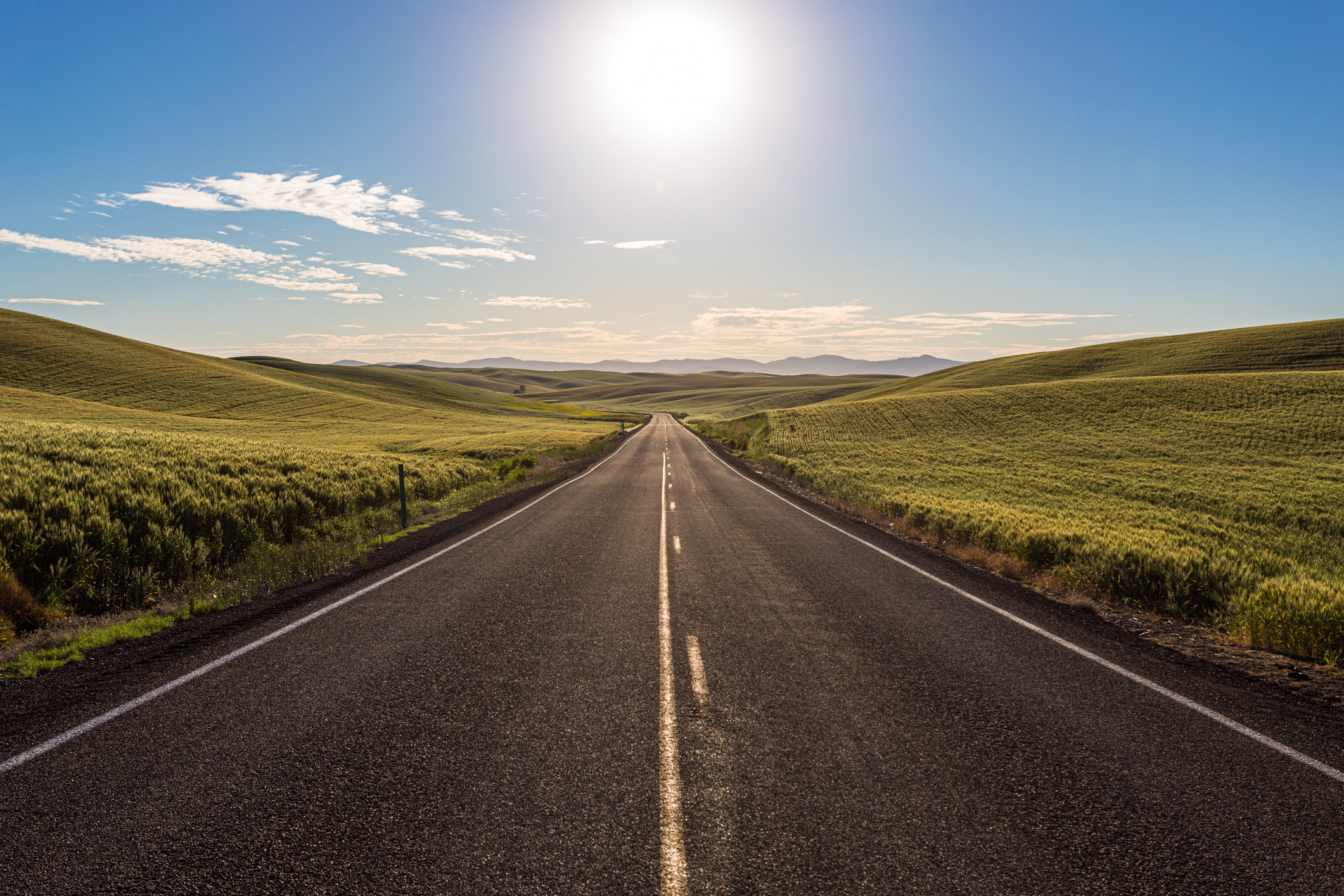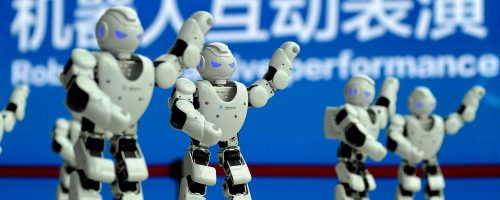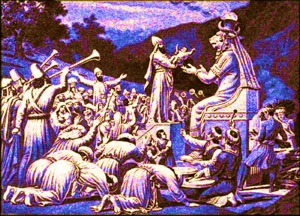Time is pressing to turn our tech Titanic around.
The Luckiest Country

America's fantastic endowment and entrepreneurial spirit maintain its global preeminence.
There is a Providence that protects idiots, drunkards, children, and the United States of America.
Otto Von Bismarck
America, the proverbial lucky fool, remains, despite itself, the world’s leading military power and largest economy. This has little to do with the genius of our leadership, but largely despite them. This failure is reflected in part by the fact that most Americans reject the political establishment forcing them to choose between unpopular President Joe Biden and his equally despised likely opponent, Donald Trump.
Mike Barone, arguably the most knowledgeable political commentator of the last half century, suggests we are experiencing a political “doom loop” of historic proportions. But despite this, the U.S. is so powerful, compared to its key geopolitical rivals, it could even survive four more years of Joe Biden (or God forbid, Kamala Harris) or even the vengeful incoherence of Donald Trump. Indeed despite these poor leaders, the U.S. increasingly dominates as the largest recipient of foreign investment.
Notions of inevitable American decline, of course, remain popular, particularly in Europe, where such notions have been popular since at least the early seventies. Yet it is not Europe, or even China, that threatens American preeminence, but our self-absorbed and increasingly feckless elite class, extending from Wall Street and Silicon Valley to academia, the media, the arts, public school education, and the state bureaucracy. All hold a generally disdainful view of the country, its heritage, as well as its prospects.
Why America remains on top
America’s long-term prognosis turns on three things: the self-correcting nature of the Constitution, its enormous physical endowment, and the innovative nature of its people. The political system may get bent by the depredations of the federal nomenklatura or the iconoclastic impulses of the Left, but the courts, Congress, and public opinion usually work to restrain the the worst excesses of would-be authoritarians.
Much of our providential advantage rests also on physical resources. America dominates the physical world—largest oil and gas producer, a nation blessed with natural ports, and large reserves of freshwater. It has the world’s largest expanse of arable land and a variety of climates that allow for a remarkable range of economic activities from the icy north to the semi-tropical south. In the aftermath of the Russian invasion of Ukraine, the U.S. resources base, for example providing fossil fuels to Europe, has become ever more critical.
Then there is the human edge. Despite all our well-recognized flaws in education, declining life spans, depressed teenagers, and widespread social unrest, Americans still churn out innovations at a level unmatched anywhere. America is home to all seven of the world’s top tech firms and all but five of the top 25. In terms of venture capital investment, a key factor in creating new companies, the U.S. leads easily, with over four times as much as China, and almost ten times as much as third-place Britain. No large country comes close to the U.S. in creating “super entrepreneurs.”
Confronting “monsters”
Early in its history America did not seek to impose itself on other countries. As Secretary of State John Quincy Adams suggested in 1821, America “goes not abroad, in search of monsters to destroy.” But over the last century, America’s leaders have felt compelled to confront “monsters,” sometimes necessarily, as in World War Two, but also stupidly, as with the First World War, Vietnam, and the most recent interventions in Iraq and Afghanistan.
America still confronts genuine threats, but we sometimes fail to recognize that our biggest rivals are plagued with fundamental weaknesses far more profound than our own. Over the past century America has seemed, and has been widely portrayed, as overmatched by competitors like Germany, Russia, Japan, and now China. Yet in each case, the U.S. turned out to be far stronger and resilient. To paraphrase Mark Twain, news of America’s demise is often declared far too prematurely.
Europe has often been seen by many American intellectuals, both right and left, as superior and to the U.S. Yet today Europe’s pretense of world leadership is something of a sideshow, even as leaders like France’s Emmanuel Macron and Germany’s Olaf Scholz seek influence in “a multipolar” global order. The dirty secret is that Europe is getting weaker; Germany, its dominant economic power, has awful demographics and, largely due to energy policies, is experiencing a self-inflicted industrial collapse. France appears to be on the verge of anarchic collapse. Nor can Europe count on emerging industries. The continent is home to only one of the world’s 25 most valued tech firms, and boasts a barely functional space program. After trailing the European Union’s economy as recently as 2008, the U.S. economy is now almost one-third larger.
Similarly, Russia, a specter for generations, has turned out to be a far weaker than expected, both during the old Soviet Union and the current neo-Tsarist Putin regime. Russia’s weakness has been particularly evident in the botched invasion of Ukraine, its shrinking population intensified by the current mass out-migration of talented people from that troubled country. Russia, with a GDP smaller than South Korea’s and barely a tenth of China’s, is today more an irritant than a global rival, outside its nuclear arsenal.
Finally, there’s Japan, the great bogeyman of the late twentieth century, now retreating on the global stage. Not only has its economic growth slowed, but it has been relegated to the backbenches of the digital age. Indeed the country now boasts not one of the top 25 tech firms by market value. Its future prospects are clouded by a demographic implosion that will see rapid aging and a shrinking labor force, something also eclipsing the prospects of Japan’s close followers, South Korea and Taiwan.
The limits of the “Chinese Century“
In contrast, China represents a serious challenger as it reasserts its historic role as a global center of wealth, and political and military power. But China’s economic and population growth rate is slowing, its bloated real estate markets showing signs of implosion, and industrial production has fallen to the lowest level since 2004. The country’s leaders, now also facing an employment crisis among young college educated workers, have quietly abandoned the notion of passing the U.S. in the next decade. The country faces enormous internal problems as hundreds of millions, particularly in the countryside, remain excluded from a system which favors both the very rich and the government-funded clerisy. China, notes one observer, is now developing “something resembling a permanent caste system” that is incongruous with growth and innovation.
China also lacks a resource base close to that of the U.S. Despite enormous efforts, China can barely feed its own population, and increasingly needs to import more food. Its carbon-dominant economy—which produces more greenhouse gases than the rest of the developed world combined—is critically dependent on oil and gas from Russia, Iran, Saudi Arabia, and even the U.S. Like Japan, China also faces a soaring senior population that is expected to more than triple by 2050, one of the most rapid demographic shifts in history.China’s working-age population (those between 15 and 64 years old) peaked in 2011 and is projected to drop 23 percent in the next quarter-century.
China’s authoritarian political system arguably poses an even bigger problem. The Communist Party in previous decades sparked an historic economic boom by tapping the energy and resourcefulness of its people. Yet as it has returned to its Maoist roots, it’s increasingly clear that economic freedom does not mesh well with the country’s constraints on its own innovative, privately owned companies. Similarly, the increased threat of CCP government interference and higher operating costs has caused 1,700 companies to begin to move out of China. Softbank, the giant Japanese based venture firm, has seen its revenues crater as its Chinese investments fell due to government clampdowns, and has suspended future investments in China. A number of American entrepreneurs who came for the Sinic gold rush have pulled out as well, no longer seeing China as the harbinger of the future.
Even China’s much ballyhooed “belt and road” initiative, once seen by Western oligarchs as a model, has floundered. As it seeks to dominate the developing world, the Middle Kingdom has become a major lender to countries like Pakistan, Sri Lanka, and Zambia, hardly the world’s best credit risks. Its aggressive expansion into the South China Sea has backfired, leading many regional countries—Australia, the Philippines, Vietnam, Japan, South Korea and most importantly India—into a de facto alliance with America.
America’s weakness comes from the top.
The United States could likely survive either of the awful choices headed to the Presidential ballot, but perhaps not the elites’ toxic blend of selfish opportunism and relentless virtue-signaling. Support for the country’s traditions has been consistently assaulted by those, notably on Wall Street and Silicon Valley, who count among its greatest beneficiaries. The corporate elites, for example, have financed, often through their lavishly funded non-profits, groups like Black Lives Matter and CRT prophet Ibram Kendi—despite their openly Marxist, anti-capitalist, and anti-American views. On other issues, such as race, policing, education, and gender, oligarchs and their foundations have established a dismal record supporting societally disastrous policies regarding education, energy, and racial preferences.
These worthies are less interested in resisting China’s rise than profiting from it. Even defense contractors like Raytheon claim we should not seek to “decouple” from China due to a potentially disastrous dependence on their industrial prowess. Wall Street figures such as Michael Bloomberg, Ray Dalio, Jamie Dimon of J.P. Morgan, and even Blackrock’s Larry Fink seem to see no contradiction between their craven progressive statements about race and climate change, and China’s brutal repression in Sinkiang, Taiwan, or Hong Kong. Often they seek to drive American and Western economies towards low growth and high energy prices, while investing in a country that continues to build new coal plants, contributing to record levels of the least clean fuel now being burnt, particularly in developing countries.
Perhaps more terrifying is the willingness of our tech oligarchy to play ball with China’s surveillance state. Indeed, firms like Apple are more than willing to build China’s future supremacy; Apple’s astounding $275 billion deal grants China continued control of production while selling off advanced technology to the autocratic regime. Artificial intelligence related firms such as Nvidia chafe against any restrictions on their investment and partnership with a state that sees such technology as critical to its global preeminence.
The hope is on Main Street
Rather than relying on our economic and political elites, America’s better future lies on Main Street and in its vast hinterland. Between 2017 and 2020, five states—Arizona, Texas, Oklahoma, New Mexico and Nevada—accounted for 30 percent of all manufacturing job growth. Newcomers from abroad, as well as millennials, are moving not so much to dense New York or Los Angeles, but suburbs, as well as to less-heralded locales like Indianapolis, Columbus, Dallas, Nashville, Houston, Miami, and even California’s Inland Empire.
It remains true that most Americans are rightfully concerned about their country’s decline. Data from AEI’s American National Family Life Survey, which sampled over 5,000 Americans and was fielded in November and December of 2021, found 74 percent of Americans believe that things are getting worse and barely a quarter (26 percent) see things improving. Yet, unlike their betters, Americans remain far more patriotic than citizens of other Western countries.
This does not mean, as some on the Right may hope, a return to the old, whiter, less diverse America. Beyond the chaos of the Biden border policies, the country is made stronger by remaining the most immigrant friendly country in the world. These newcomers are helping to make America both broadly both more cosmopolitan but also intrinsically American. Our historic ability to, over time, absorb other cultures remains a critical factor in our resilience. Even country music is taking on an increasingly multi-cultural spin as cities like Nashville become prime lures for immigrants. As John Dos Passos wrote in the 1930s, America is many things: a “slice of a continent”, “the world’s greatest river valley,” and “a set of bigmouthed officials with too many bank accounts.” Yet writing in the 42nd Parallel, he suggests that more than anything America “is the speech of the people.” America, well into third century of existence, may not be homogeneous enough for some right-wing Christian nationalists, but its true genius lies with its tradition of successful reinvention. This year we may celebrate our independence with Modelo rather than Bud Light, but the national essence remains. We progress both by preservation and evolution, a country both unfixed and unfixable, just the way we like it.
The American Mind presents a range of perspectives. Views are writers’ own and do not necessarily represent those of The Claremont Institute.
The American Mind is a publication of the Claremont Institute, a non-profit 501(c)(3) organization, dedicated to restoring the principles of the American Founding to their rightful, preeminent authority in our national life. Interested in supporting our work? Gifts to the Claremont Institute are tax-deductible.
Today’s fraudulent multiculturalist faith fragments society—and fractures the psyche.
Republicans need a new mission.



